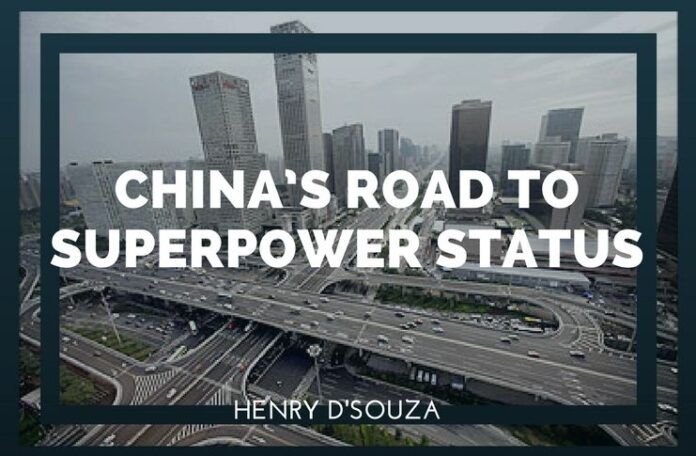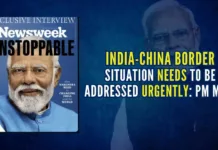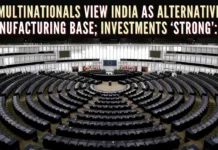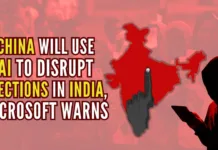
China tapped its history and called the path forged, the Silk Road
When President Xi Jinping of China first announced his Silk Road project in 2013, he did not realise that it would be the “project of the century.” If the West’s “Pivot to East” is combined with China’s version of “Pivot to West” we can expect a rapid interaction of the “globalization” process. It will be China’s attempt to bridge the gap between poor and rich nations, while indirectly goading countries to level the economic gaps between rich and poor within a country. Peaceful development is a much better way of improving a lot of mankind than wars.
The sea-route complemented the land and was relatively safer since tribes were not fighting over territory.
Harry Kris1 concluded that China had three goals in its expansion to the west: building a “fully developed nation” as part of the “great rejuvenation of the Chinese nation”; exporting China’s excess industrial capacity and therefore its influence; and, a new model for a Great Power relationship as a complement to the US effort.
The “belt” part of the Belt and Road (B & R) or One Belt and One Road (OBOR) suggested a movement of a conveyor belt of industrial and technological know-how, and a “Road” stood for various types of transportation, modern tarmac roads, high-speed railways, airways, ships, ports and pipelines. “To become rich, one must first build roads,” is a famous Chinese saying. China tapped its history and called the path forged, the Silk Road, when camels pioneered the land route across Central Asia, two thousand years ago. The sea-route complemented the land and was relatively safer since tribes were not fighting over territory.
The Chinese were not the only ones taking these two main routes across Eurasia. The Dravidians pioneered these routes, since 23,000 BCE, to populate the world, build an empire, and spread their culture, elements of which still linger today. The Dravidians built a famous civilization which Plato popularized as Atlantis. The Indian empire lasted for at least 23, 000 years.
What is amazing about the B&R, according to International Monetary Fund (IMF) director Christine Lagarde, is that it will close the infrastructure gap of $1.5 trillion per year. Least Developed Countries (LDCs), Land-locked Developing Countries (LLDCs), and Small Island Development Countries (SIDs) will benefit from this project which is part of the UN’s 2030 Agenda and the Addis Abba Agenda. These relatively poor countries make up a third of 60 B & R countries, which account for 30% of the world’s GDP.3 The UN Under-Secretary for these poor countries Fekitamoela Katoa Utokamanu felt that B&R activity would stimulate South-South cooperation for sustained growth.4
Japan might join B&R as President Trump withdrew from the Trans Pacific Partnership. Japan wanted “harmony with a free and fair TPP zone.”
Russian blogger Anastasia Sukhoretskaya sees peace emerging from B&R as different cultures mix through connectivity. The high-speed railway, for example, will cut travel time from Beijing to Moscow from 7 days to 3.5 Chinese tourists are already taking advantage of the time saved.
B&R is not a single path; it has extensions in Eurasia. China has already opened in 2016 an 11,000km direct freight route between Yiwu in Zhejiang Province and Riga in Latvia and to Finland. The plan for the next decade is for an Arctic Corridor railway that would take gas from the $27 billion Yamal LNG plant in Siberia to Rovaniemi in Northern Finland and then to Kirkenes, Norway. This would reduce the distance by 20 to 25%.6
Another offshoot is the Kashgar-Gwadar rail financed wholly by China. Gwadar will have a city and a Free Zone that will host industrial parks for Chinese companies, in particular. Its location in Pakistan makes India anxious since it suggests encirclement. Dr Muhammad Shahbaz who is studying medicine in China hopes that this will also be a health corridor. Investments in coal, hydel, wind, solar and LNG, have already begun.7 Other off-shoots are to Myanmar and Russia.
The Chinese also have an active programme in Africa. China built the headquarters of the African Union in Addis and a rail link to Djibouti. The idea was to open up North-east Africa and have access to the Mediterranean. Since the assets to promote trade needed to be protected, the political and military aspects of planning come into the picture. For this reason, the Director of the Institute of History at the Russian Institute of the Sciences Viktor Larin concluded that OBOR “is a geopolitical project in the first place, and only then an economic one.”8 China has recently moved troops to its military base in Djibouti where there are also US, French, and Japanese troops.9
Given certain conditions, Japan might join B&R as President Trump withdrew from the Trans Pacific Partnership. Japan wanted “harmony with a free and fair TPP zone.” The ports and other infrastructure that was being built should be available to all; projects should be economically viable; projects should be financed by debt that can be repaid, and there should be no harm to a debtor’s economy. These conditions would make B&R more efficient. As China agreed to operate according to international rules, Japan is likely to join B&R. India has yet to make up its mind.10
Syria might be another hub for the B&R extension plan. China had investments in oil and gas in Syria before war broke out. But China, Russia and Iran have been given reconstruction rights in Syria. As part of the reconstruction, the Chinese will hold an exhibition with 30 Arab countries in Yinchuan, Ningxia Hui province, in September 2017. Qin Yong, deputy Chairman of the China-Arab Exchange Association announced an investment of $2 billion were 150 Chinese companies will operate in an industrial park. These events show that China usually moves in when there is a power vacuum. The Chinese drive, in this case, is towards the Levant and North Africa.11
Based on these developments, Turkey’s President Recep Tayyip Erdogan felt that China’s imaginative plan was for a “politically and economically harmonious system…for stability and a welfare-centred new era…”12 He added that these reforms were for his region, but it was not. In effect, China was reaching out to the world in a positive way.
To be continued…
Bibliography
- Harry Kris, “Trade Connectivity and India – OBOR impact on foreign trade,” pgurus.com, May 15, 2017.
- Henry D’ Souza, Plato’s Atlantis is Bharat’s India, self-published, Mississauga, 2001; revised edition, 2008.
- Dan Steinbock, “Belt and Road could change the twenty-first century,” chinadaily.com.cn, 15.5.2017.
- F.K. Utoikamanu, “Initiative offers potential for sustainable growth,” chinadaily.com.cn, 16.5.2017.
- Anastasia Sukhoretskaya, “Belt & Road: The route to stability in the world,” chainadaily.com.cn, 14.5.2017.
- Doug Tsuruoka, editor-at-large of Asia Times, “Finland could serve as China’s Arctic gateway for B&R,” chinadaily.com.cn.
- Dr. Muhamad Shahbaz, “How the B&R could become a health corridor,” chinadaily.com.cn, 17.5.2017.
- M.K. Bhadrakumar, “Russia stands to gain from China’s One Belt and One Road Megaproject,” russiainsider.com, 18.5.2017.
- “China sends troops to open first overseas military base in Horn of Africa,” russiainsider.com, July 12, 2017.
- Mina Pollman, “Even JThe EEC pan is now considering joining China’s one belt, one Road,” thediplomat.com, June 15, 2017.
- Pepe Escobar, “The New Silk Road will go through Syria,” russiainsider.com, July 13, 2017.
- Markar Esayan, “An opportunity for global peace: the Silk Road project,” daily sabah.com, May 19, 2017.
Note:
1. The views expressed here are those of the author and do not necessarily represent or reflect the views of PGurus.
- Part2 – China’s Road to Superpower status - July 20, 2017
- Part1 – China’s Road to Superpower status - July 18, 2017
- P2 – Can or should Qatar be ostracised? - June 29, 2017











Loads of Chinese rubbish..basically it says that if the poor don’t grovel before the rich they will stay poor..and they may pick up some crumbs and survive if they grovel..adding some Dravidian crap to boot
What is this story on “Dravidians” doing in an article on China? – “The Dravidians pioneered these routes, since 23,000 BCE, to populate the world, build an empire, and spread their culture, elements of which still linger today. The Dravidians built a famous civilization which Plato popularized as Atlantis. The Indian empire lasted for at least 23, 000 years.” Really – who are the Dravidians? – is that a race? people living in a region? people who spoke one language? because the genetic map of the indian population shows no such race?
23000 years?? Any excavations ? data? anything to prove this?
This is puerile. Grovelling up to the Chinese…actually facsimile of chinese writeup as a reader noted already. While it is good to have a counterpoint, this beats everything. Et tu Brute (pgurus)? A country which runs a battle tank over it’s dissenting citizen is considerate to the world. Are you kidding me? Whom are you fooling. Has anybody noticed the general tenor of the Indian media since the Chinks started the whole circus…well everything & everyone could be bought for a price it seems. Sad and I thought that this portal was for rational minded folks. Another Kejriwal & gang!
Henry D’Souza is a respected writer, having written many in-depth posts on Geo Politics. There is a Part 2 also coming and you should wait till you have read the entire article.
Sounds like the promotional literature of China’s OBOR project; they couldn’t have said it better… not a single fault either in the intentions or the proces of execution. How I wish this were the real China!
China is the biggest bully on earth, and a self-professed dictatorship to boot; North Korea and Pakistan are just its pawns. The entire world knows it, but no one including India will call the bluff because that’s how international diplomacy works. But we, Indian citizens, are not bound by any such diplomatic niceties. Let’s expose China, not sing its praises, which it least deserves.
If China’s plan is to have politically and economically harmonious system for stability and welfare centered era, why is it having disputes with all its neighbors barring it’s close alleys.
harmonious system for stability and welfare is for the Chinese, you silly!!!!. it is not meant for others